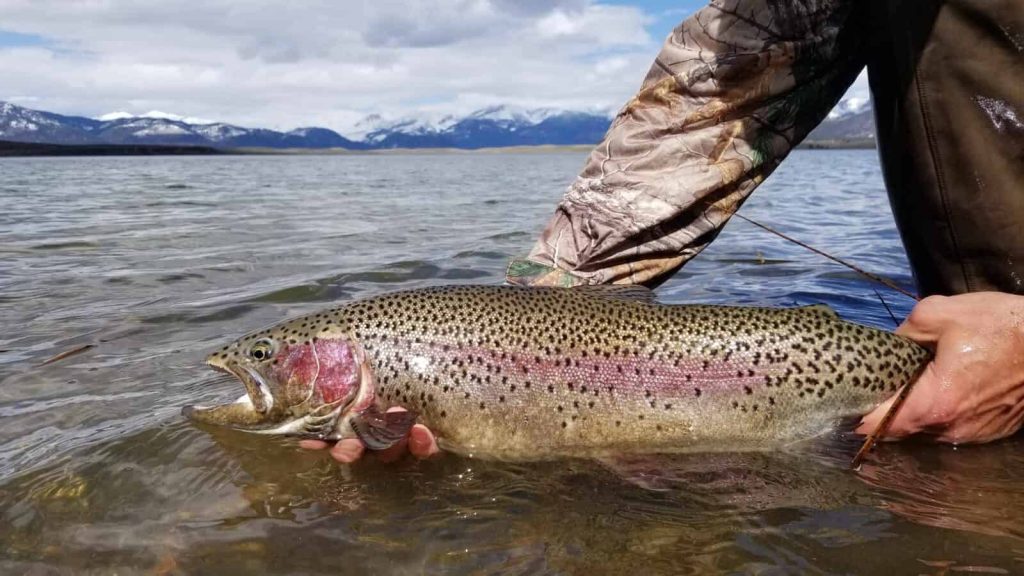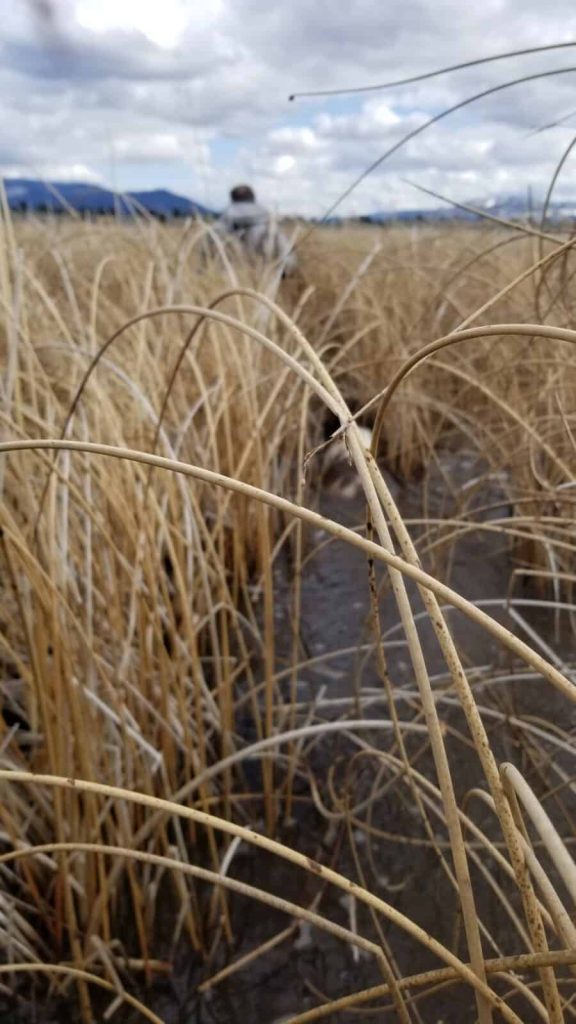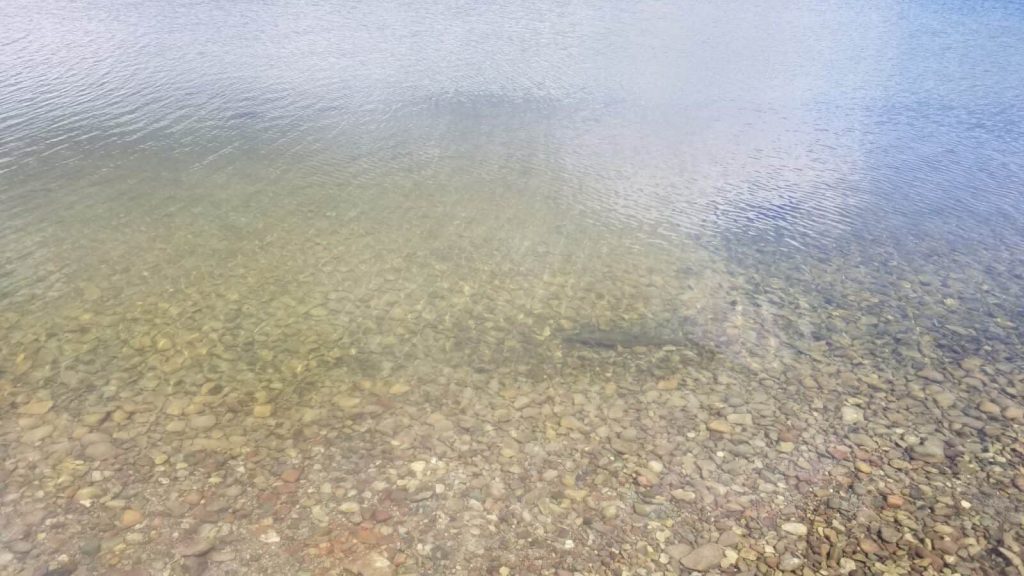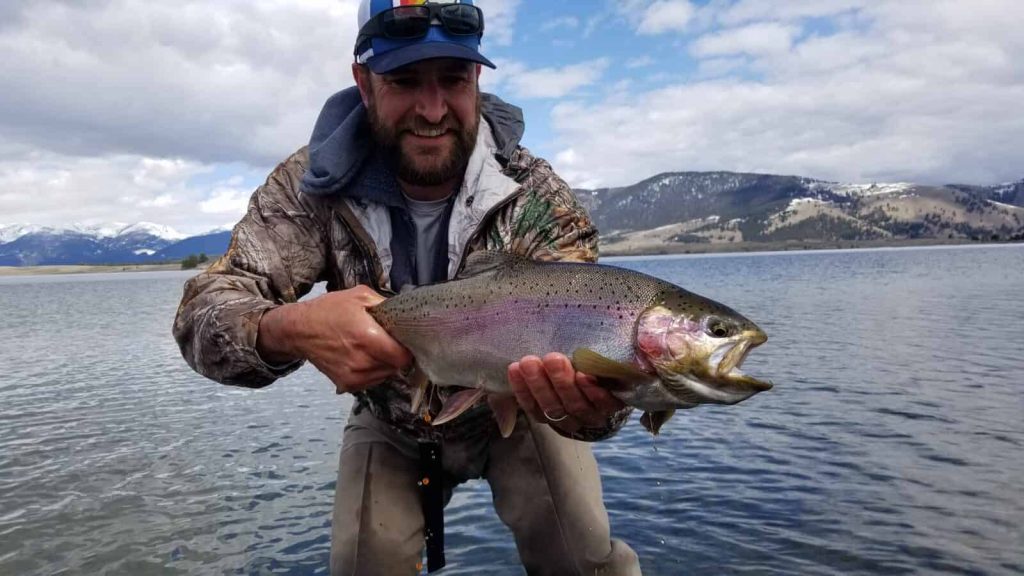How to Catch Big Ice-Out Trout: Tips and Tactics for Springtime Lake Fly Fishing
As lakes and reservoirs begin to thaw, fly fishers can find big trout by timing ice-out events.

An unexpected locked gate had foiled our original intent to access a stretch of river, so we turned around and headed for a popular bridge. The beat above it was a compromise, a backup plan, and neither of us was overly eager about wade-fishing a well-known spot on a day intended to be exploratory. That’s when I remembered the lake. It was only a few miles down-the-road. I radioed Metcalf in the rig ahead of me (we had driven separately, obeying distancing guidelines) and presented the alternative. “Oh yeah, I’ve got my lake kit with me!”

From the initial looks of things, our timing seemed fortuitous. The lake was largely frozen, with the ice receding around the edges. Like stumbling into the Septober woods the day a cow goes into estrus, we had, completely by accident, arrived at sportsman’s paydirt. This is ice-out, when big trout are within a fly cast from shore.
We pulled into the parking area and readied our gear, just as a guy pulled up in a nicely modified motorized canoe. He had his wife and kid with him and dangling from his stringer, a two-foot rainbow. “Need any help with that stuff?” Metcalf inquired.
“Nah, I got it, but thanks,” he replied.
Then the guy decided to drop us a nugget. “The fish are stacked up in that bay over there in a few feet of water. Big ones. Its a trek through the marsh on foot but you should hammer em!”

We probed the shoreline fruitlessly for an hour with various leech and crayfish patterns. I waded a shallow flat out to the ice-edge and scanned the limpid water for any sign of life. That’s when Metcalf found the fish. Just as our newfound friend at the boat ramp had said, they were stacked up in a few feet of water, like dogfish circling scraps.

These trout, largely comprised of 3/4-year-old fish that were initially stocked as fingerlings, represented the upper class-size and were conducting a false spawn. The hens were dropping sterile eggs, creating a feeding frenzy. Matching-the-hatch, in this case, involved egg patterns and strike indicators. On this particular put-and-take fishery, the fish were taking just as soon as we put our “flies” in the water!

If you happen to get lucky enough to witness such an event, a variety of tactics can work. Stripping a bugger or a crayfish pattern across the “bed” can trigger defensive strikes. Of course, on lakes with naturally reproducing trout populations, steer clear on inlet streams and let the trout do their thing.
Trout seek warmer water along the ice edge and food sources such as leeches, crayfish, damselfly/dragonfly nymphs, callibaetis nymphs, and chironomids. A pretty basic selection of fly patterns will mimic this fluctuating menu along with a floating line, intermediate sinking line, and a fast sinking tip or full sinking line to cover the water column. Vary retrieves depending on the food source you’re attempting to imitate, but in general, during ice-out, think slow.

Chironomid, or midge fishing, is a whole game in and of itself. Our neighbors to the north are well-versed in this highly effective lake fishing tactic, for a general introduction click here. https://www.bcfishn.com/rookies-guide-chironomid-fly-fishing/
Where wading is impossible or impractical, the versatility of a float tube, personal pontoon, or canoe will open up waters while boat ramps are still encased in ice. I’ve had many memorable days probing the ice edge via float tube while the fish were just out of reach of the shore-fishing crowd. With the arrival of runoff, many rivers will be largely unfishable for the next month, which coincides with ice-out on mountain lakes and reservoirs. Your biggest trout of the year may just come at the beginning of the open water season!



